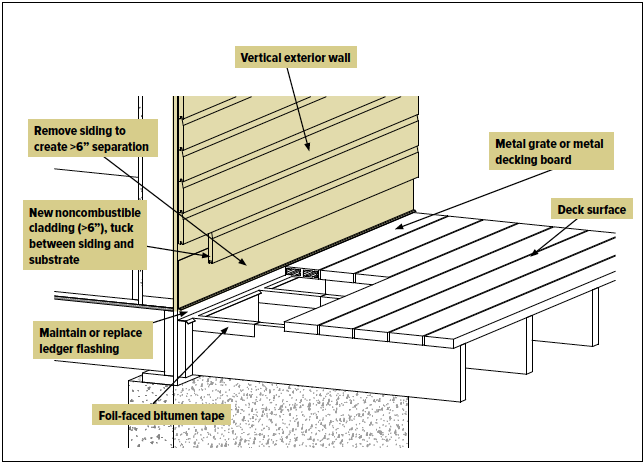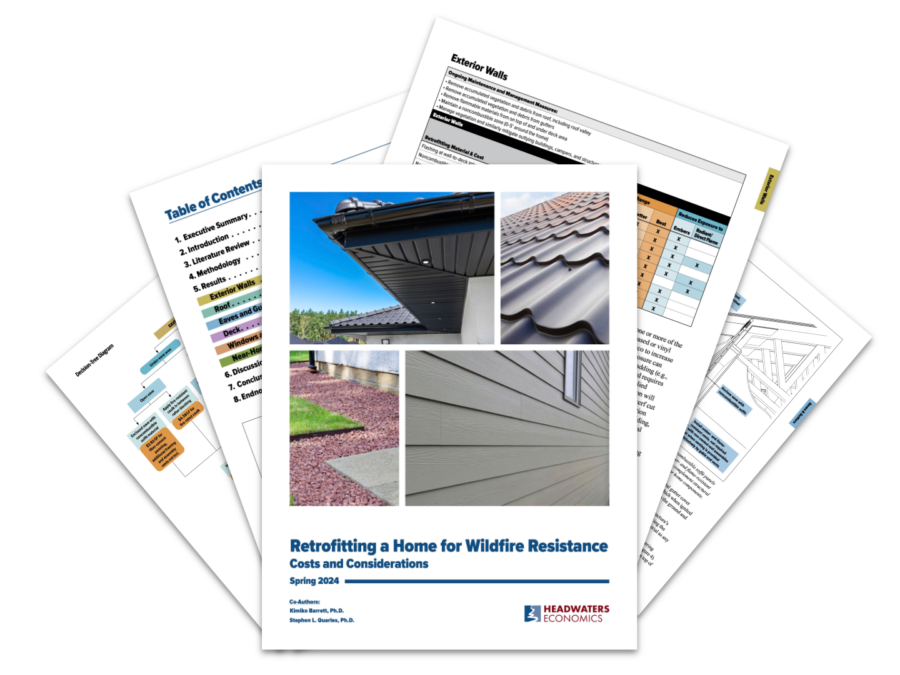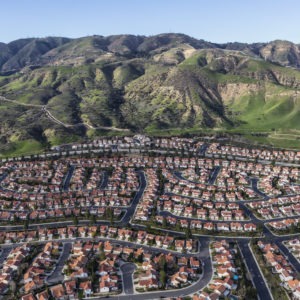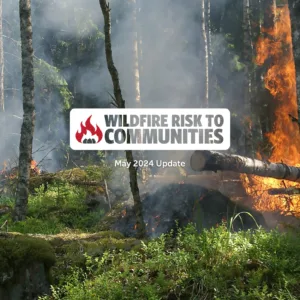A growing body of research has shown that a new focus on wildfire resistance in the built environment—in our homes, buildings, and other infrastructure—could substantially reduce the risks facing communities in wildfire-prone areas. Many developers are already beginning to incorporate materials and methods into new homes to meet the wildfire challenge without a significant impact on building costs. However, how do we upgrade millions of existing homes that are currently in wildfire-prone areas?
Headwaters Economics examined the costs for improving the structure and design of existing homes to increase their wildfire resistance, in partnership with California’s Department of Forestry and Fire Protection (CAL FIRE). The results are detailed in a report, “Retrofitting a Home for Wildfire Resistance,” and show that some of the most effective strategies to reduce the vulnerability of homes and neighborhoods to wildfire can be done affordably.
Simple actions can reduce a home’s vulnerability to wildfire
While every home is different, the analysis suggests that retrofitting costs between $2,000-$15,000 for simple and effective actions such as installing flame- and ember-resistant vents, placing metal flashing along a deck, keeping gutters clean, or using noncombustible mulch in the yard. A full retrofit to the highest level of protection could cost nearly $100,000, but in many cases that approach is not necessary. Some strategies such as removing flammable materials from near the home and removing debris from the roof can be done at little to no cost.
The report’s conclusions are derived from a detailed examination of the latest available science on building techniques and construction costs. The authors identified costs for retrofitting structures to meet California’s building code (Chapter 7A) for wildfire resistance, but the general principles and conclusions can be extrapolated to virtually any state, adjusting for local economic and supply conditions. The estimated costs include those for upgrading a home’s exterior walls, roof, deck, windows, doors, eaves, gutters, and near-home landscaping—all areas likely to be vulnerable to embers, direct flames, and radiant heat. Charts, architectural renderings, and a detailed appendix of cost estimates provide a basis for a general understanding of the methods and budgets that might be considered when retrofitting a home for wildfire resistance.

Retrofitting for wildfire can make communities safer and avoid billions in disaster costs
This analysis—along with retrofit costs generated by the California Wildfire Mitigation Program, which provides grants, financial assistance, and incentives to retrofit homes and properties at a community-wide level—will provide valuable insights for contractors and subject matter experts seeking information about building wildfire-resistant homes.
For decades our response to a growing wildfire crisis has been to protect communities by reducing fuels in the wildlands. As more people live in fire-prone areas, we must also take a closer look at building and retrofitting homes to be stronger and more durable. Wildfire losses cost taxpayers and communities hundreds of billions of dollars each year, and preparing communities before a disaster occurs is the best way to avoid damage to homes and neighborhoods. When paired with policy reforms and financing strategies, retrofitting existing homes can make communities safer while avoiding billions in disaster costs.
Acknowledgments
Headwaters Economics would like to thank the paper’s coauthor Dr. Stephen Quarles, University of California Cooperative Extension Advisor Emeritus, for his time and expertise. We would also like to thank the California Department of Forestry and Fire Protection (CAL FIRE) and the USDA Forest Service for generous support of this research.






